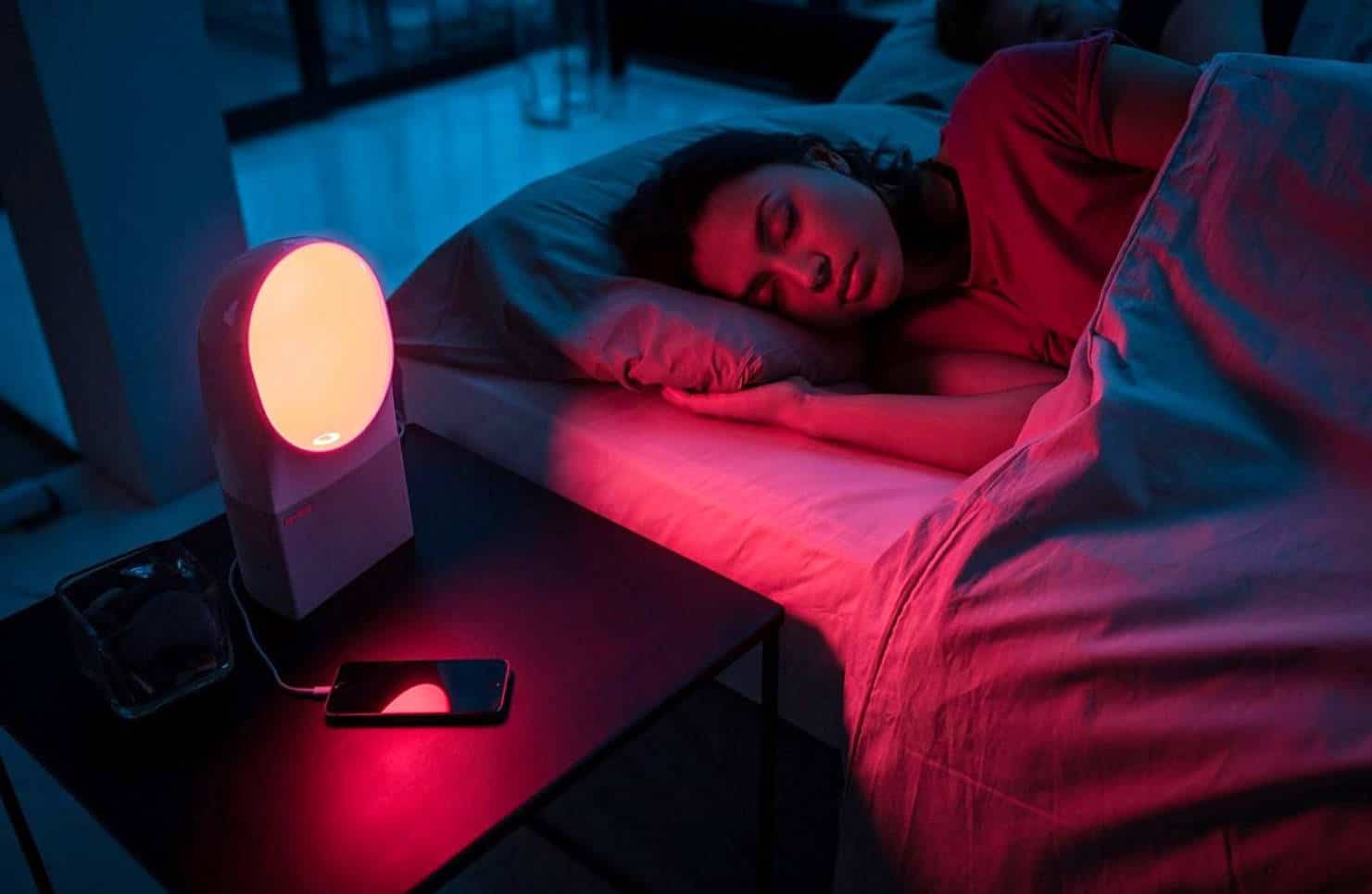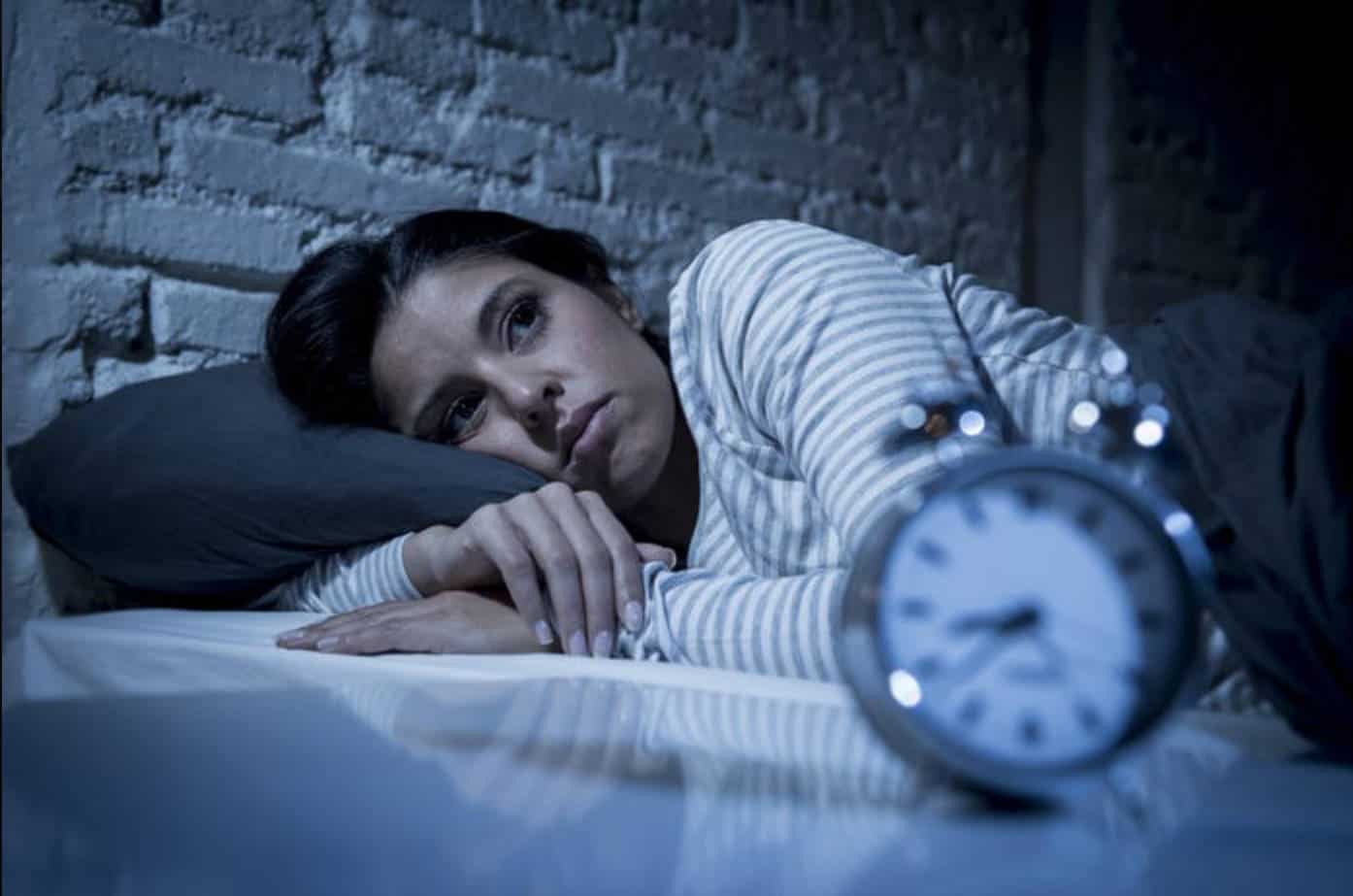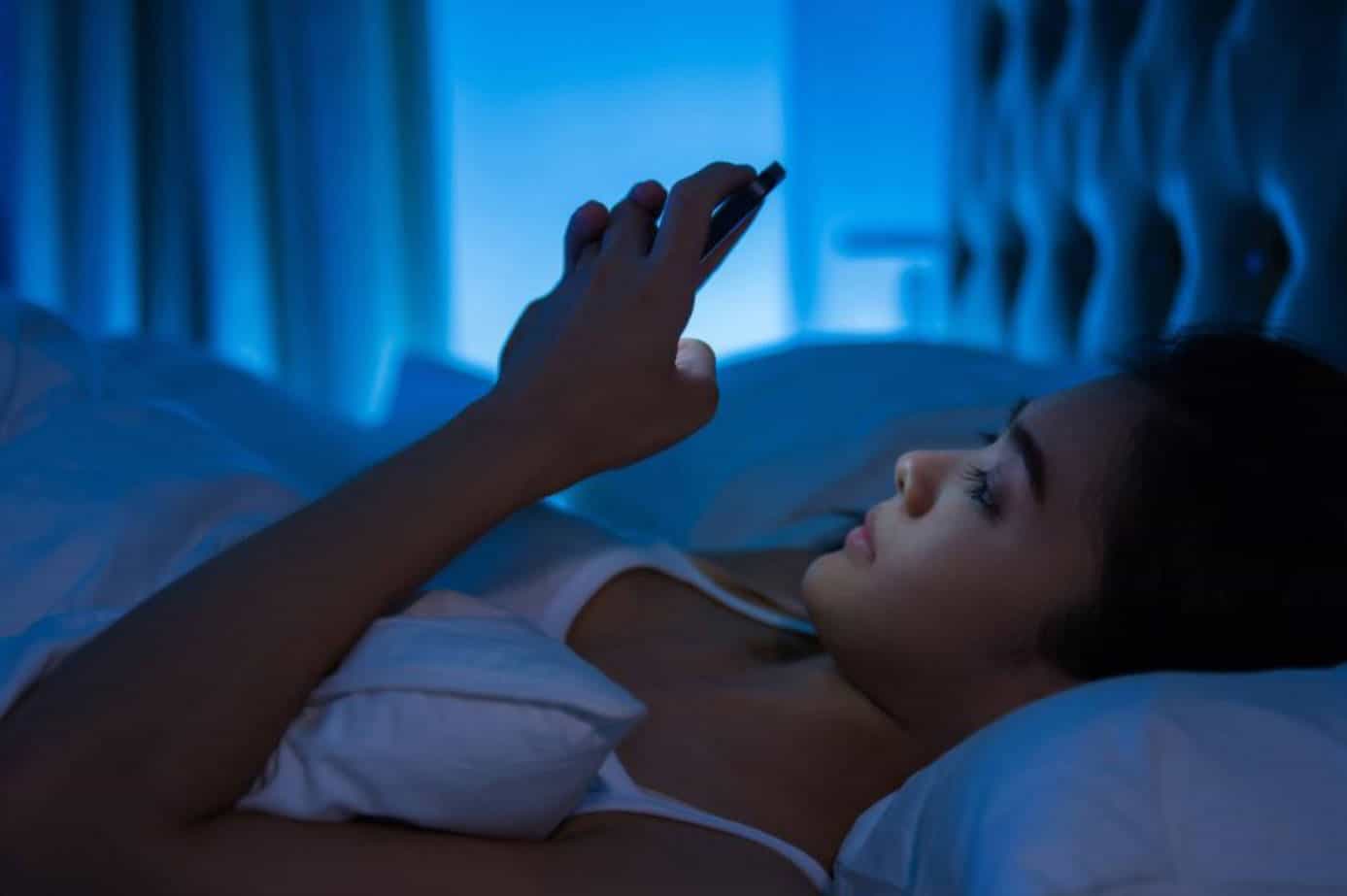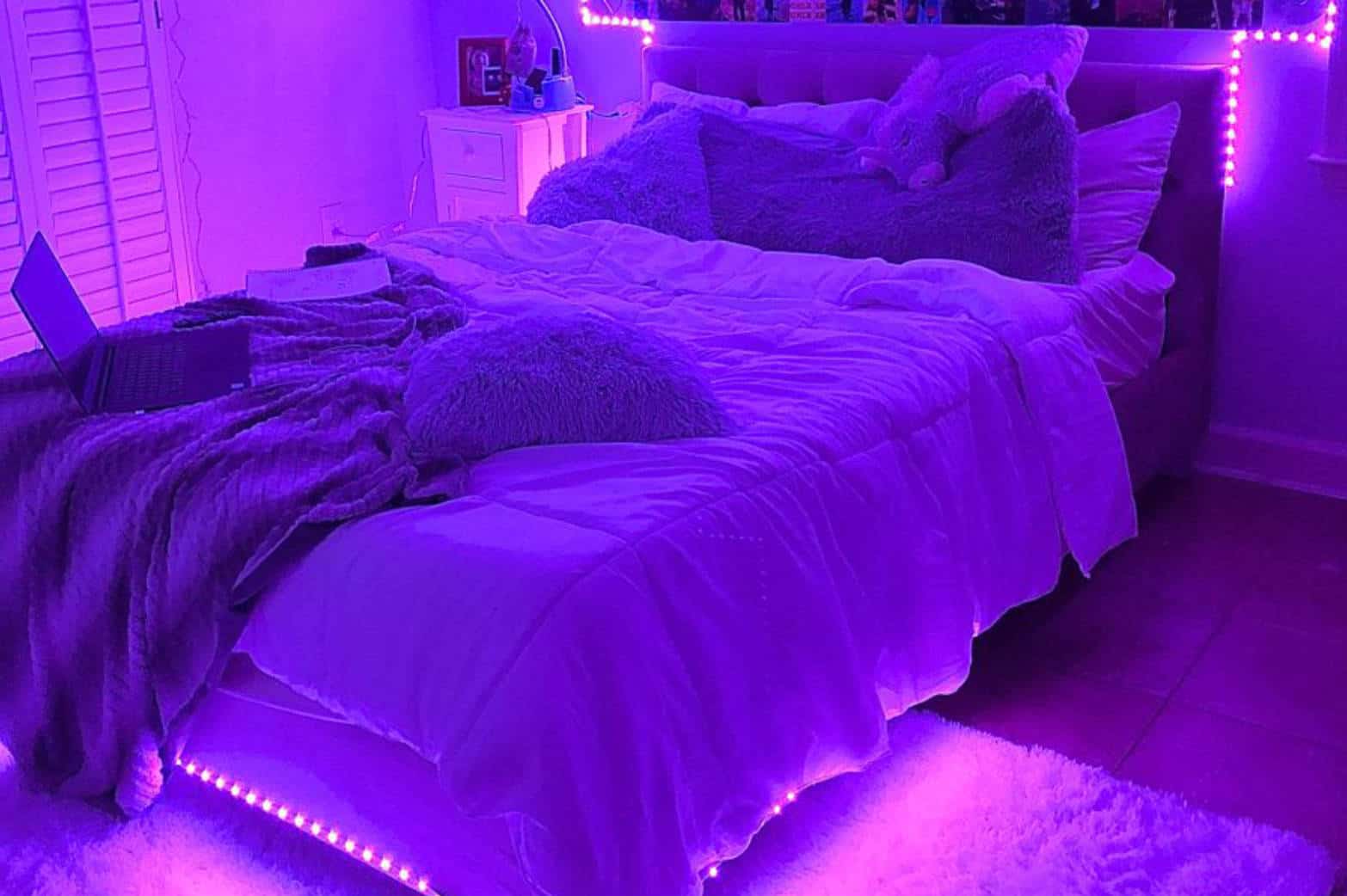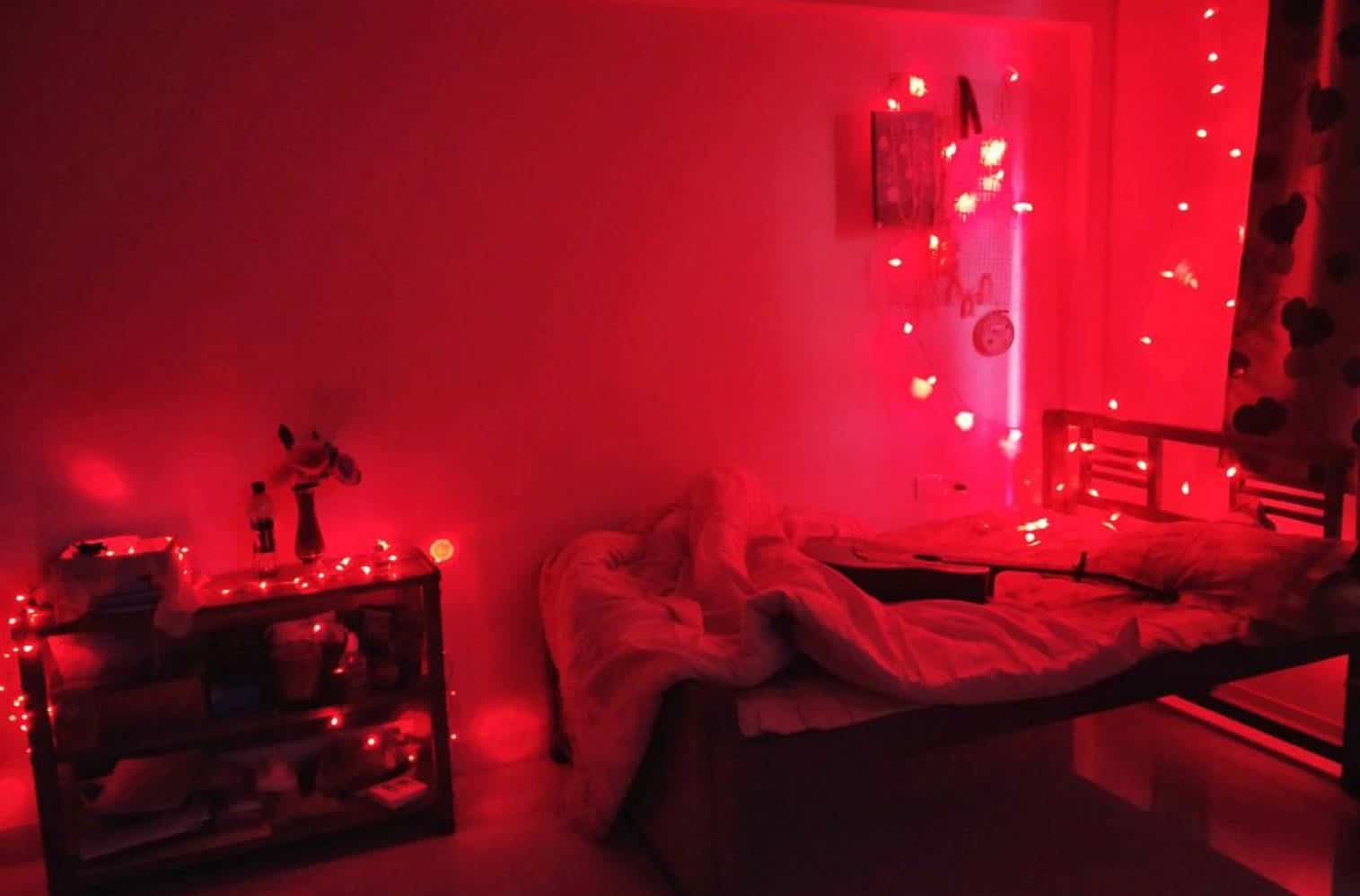LED lights have many environmental benefits. They are energy efficient, free from toxic materials, and last longer.
Since LEDs are friendly with the natural world, does this imply that they are always good and beneficial when you sleep? “Is it bad to sleep with LED lights on?” you might wonder.
How LED Lights Affect Sleep
LED lights generate artificial light
The human body works following a 24-hour cycle known as Circadian Rhythm. The sleep-wake pattern is an example of this.
The 24-hour clock is broken typically into 8 hours of sleeping and 16 hours of wakefulness. This helps you remain awake through the day by combining sleep over the night.
This cycle runs depending on the level of light and darkness your body gets exposed to. It is affected not only by your body processes but also by external stimuli.
Light is the primary external factor that can alter your Circadian Rhythm. It signals your internal clock to switch on or off particular genes that control your sleeping patterns and other activities.
When your body gets exposed to sunlight, your hypothalamus adjusts its sleep patterns when it is bright or dark outdoors. The retina detects light and transmits messages to your hypothalamus.
As it gets dark outside, your hypothalamus tells your body to begin producing sleep hormones and to lower your body temperature in preparation for sleep.
When light is detected when the sun is out, your body heats up and creates hormones that awaken the body.
Once artificial light, like LED light, is introduced into your daily routine, your body’s normal cycles are disrupted. Since the retina can receive light at any time of the day, your body no longer knows when to prepare for sleep.
LEDs, like any artificial light, can disrupt your regular sleeping patterns.
Avoid artificial light to achieve better rest. This isn’t practical in today’s world, but you can find other plausible options.
LED lights emit blue light
LED lights release more blue light than old models of incandescent bulbs. Gadgets and lights emit blue light wavelengths, which improve attention, responsiveness, and mood. This is fantastic during the day when your body needs to remain awake, but it can be an issue at night.
Sunlight contains the same blue wavelengths. They also signal to your circadian clock that you need to stay awake. As the day ends, your body clock normally slows down.
As night falls, the pineal gland, a small area of your brain, begins to produce melatonin, the sleep hormone. This gland requires a cue from receptors in your eyes that it is growing dark to increase melatonin secretion.
The more melatonin produced by your body, the sleepier you will feel. However, blue light disrupts your body’s power to prepare for rest by blocking melatonin, but your bare eyes cannot obstruct it.
So, blue light goes straight at the back of your retina, where light converts into images in your brain. You become less tired at night than usual, and falling asleep takes longer.
When you soak your eyes in blue light late at night, your body may become confused. Even if your body wants to sleep, it still gets the signal to be awake.
Your brain will believe it is still daylight and will not begin to produce melatonin. So, no one is instructing your body to sleep because there is no melatonin in your bloodstream. It’s more difficult to fall and obtain a peaceful, deep sleep.
You would want your room dimly lit or dark so that your body can produce melatonin naturally.
5 Major Risks of Sleeping with LED Lights On
Disrupted Sleep
As mentioned above, LED lights at nighttime stop your body from producing melatonin, making it more difficult for you to fall and remain asleep. Melatonin production is boosted when the room is dark and reduced when it is bright.
If you sleep with LED lights running, your circadian rhythm detects the presence of light. So, melatonin secretion is slowed, hindered, or decreased.
Prolonged Sleep Latency
The length of time it takes you to sleep after going to bed is known as sleep latency. Normally, it should only take 10 to 20 minutes to drift to sleep.
Sleep latency is a key metric since it indicates whether or not you are enjoying adequate sleep.
If your sleep latency is exceedingly short (under 8 minutes), it indicates excessive sleepiness because of a sleeping disorder or sleep deprivation.
Contrarily, when you have a lengthy sleep latency (over 20 minutes), it indicates that you can’t commence the sleep process and are suffering from insomnia.
LED lights can prolong your sleep latency at night due to several variables. These include interrupting your circadian clock, lowering melatonin production, and increasing alertness.
Since the disturbing effects do not go away quickly, it may make it more difficult for you to fall asleep.
Decreased REM Sleep
The brain undergoes different stages when you sleep, all of which are beneficial to your health. They are divided into two: Non-REM and REM sleep.
After you hit the sack, non-REM sleep begins and marks a crossover from wakefulness to sleep.
About 90 minutes after you fall asleep, REM sleep, often called “paradoxical sleep,” begins. Lower muscular tone, an elevated heart rate, erratic breathing, fast eye movements, and dreams are some of its physiological features.
This stage resembles waking, and brain activity is significantly higher than in the previous sleep stages. REM sleep happens in timeframes. The first timeframe is around 10 minutes long, and the succeeding intervals become longer.
The importance of REM sleep in calming the body and boosting the learning areas of the brain cannot be overstated. Research shows that LED light exposure at night reduces the REM stage, resulting in insomnia.
Exhaustion, depression, irritability, poor attention, and underperformance can all be symptoms of a lack of REM sleep.
Enhanced Alertness
Low weariness, strong wakefulness, sensitivity to external stimulation, and improved environmental consciousness are signs of alertness. Though this is good for your productivity, it may create sleep disruption at night.
Exposure to LED light has a significant impact on alertness. Light keeps you awake during the daytime while decreasing alertness happens at nightfall.
Light influences your alertness through a variety of processes.
The Supra Chiasmatic Nucleus (SCN) housed in your hypothalamus, is triggered when your brain senses light. By regulating awareness, this area impacts your response to your environment.
When SCN is active, it lowers regulatory neurotransmitters and raises excitatory chemicals in your body. Your norepinephrine and adrenaline levels are also boosted. These hormones have a powerful effect on wakefulness.
Adjusting the circadian cycle and lowering melatonin production are two processes through which light enhances alertness.
Increased Mental Health Issues
The impact of LED lights on the production of neurotransmitters found in the brain can cause more mental health issues because of sleep disturbances.
Psychiatric diseases such as anxiety, depression, and bipolar disorder are becoming more common. All of these issues lead to poor sleep quality.
Sleep deprivation aggravates these issues, creating a vicious cycle.
Are all LED lights bad at night?
Before you put out all of your LED lights, keep in mind that not all of them are harmful at nighttime. But you can influence how they affect you by choosing the LED light color.
Green LED Light
Green LED light, like blue light, disrupts the secretion of melatonin, though not as much as blue light.
When you’re first exposed to green light, the effects are identical, but they fade away faster over time. Also, blue light can inhibit melatonin for up to 3 hours, but green light only decreases it up to 1.5 hours.
So, it’s not as shocking as blue light, but green still isn’t fantastic either.
Purple LED Light
The color violet or purple is most closely related to the ultra-violet spectrum, followed by blue and green.
Violet can have the most negative impact on your circadian rhythm, causing melatonin release to be disrupted and suppressed the most, followed by blue.
If you value your sleep, stay away from this color after sunset!
Red LED Light
When the sun goes down, it emits a distinctive reddish-orange light that bathes the environment in warm hues. This color brings you peace and relaxation. It also makes you feel drowsy, so melatonin slowly releases, preparing you for a good night’s sleep.
So, as night falls, surround yourselves with reddish tones of light. It’s the color that comes closest to nature’s method of lulling you to sleep.
Red light impacts melatonin production the least among colors. It is good before and while you’re sleeping, leading to better sleeping patterns.
Hang dimming red bulbs all across the house as lightings for late trips to the kitchen or bathroom at night. Turn them on an hour or ahead of bedtime to help you relax deeper and sleep easier.
Summary
Is it bad to sleep with LED lights on? Well, not all LED lights are created equal, so they have different effects on sleep. Research suggests that you should not use blue light at night. Choose red or other related hues so you may always get a good night’s sleep.
